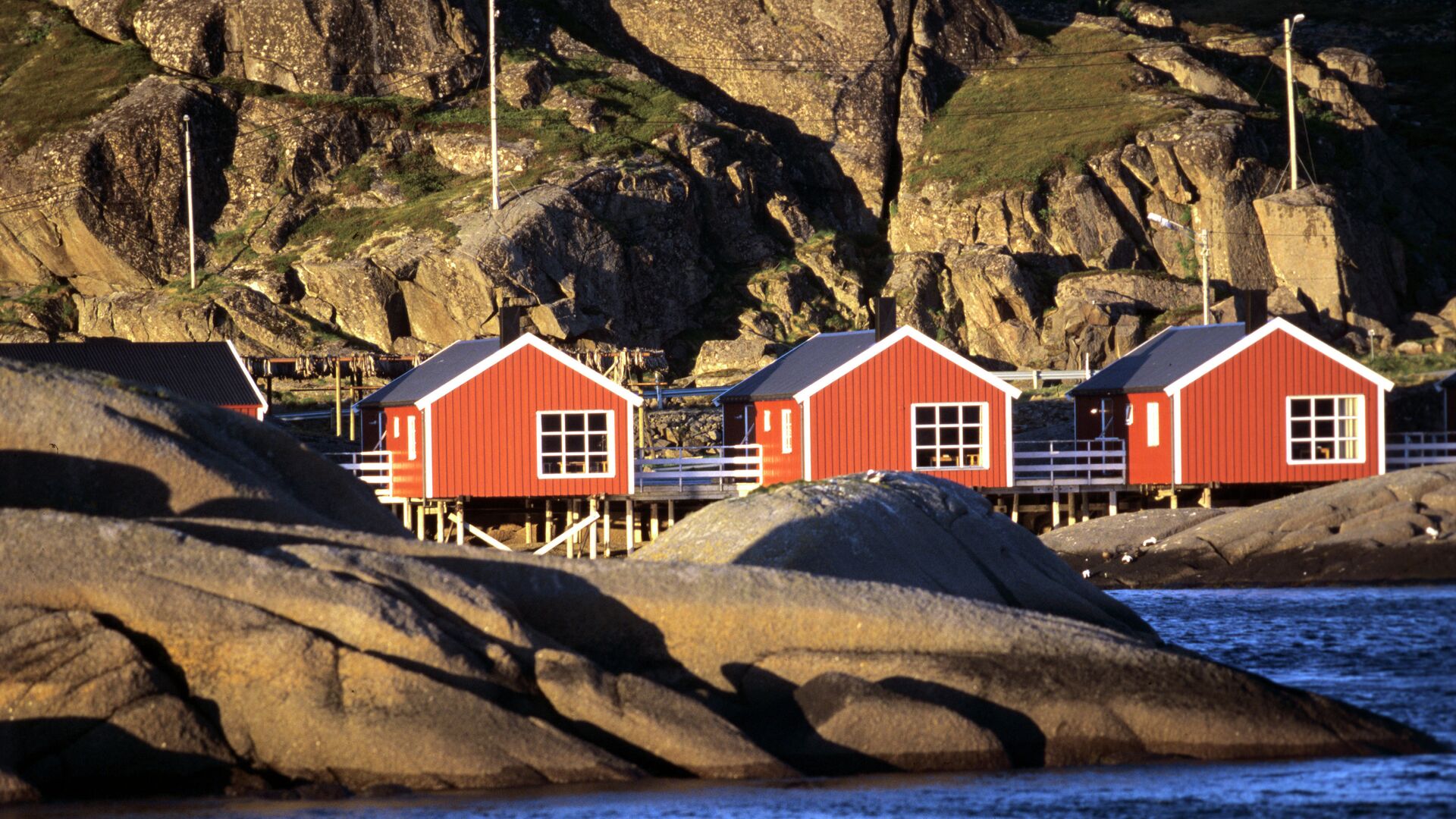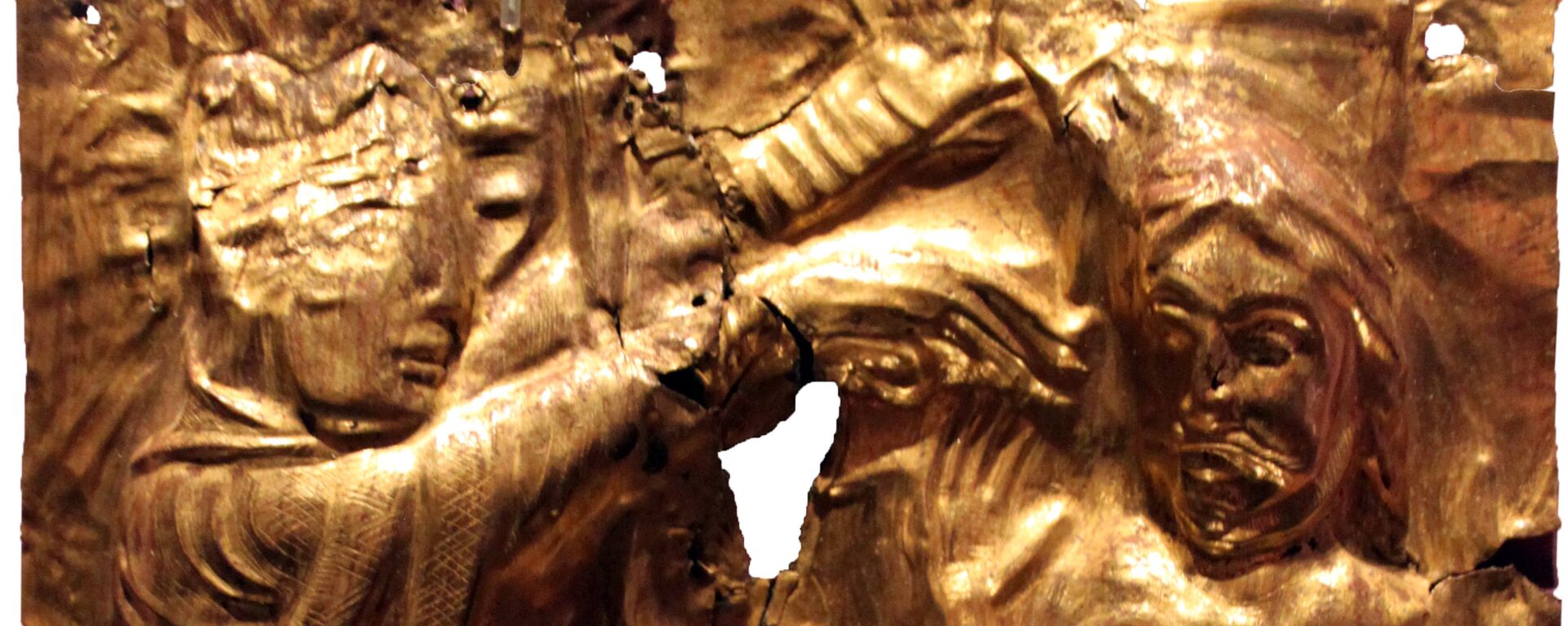https://sputnikglobe.com/20230421/photo-norwegian-woman-finds-tucked-away-viking-treasure-trove-while-cleaning-house-1109720148.html
Photo: Norwegian Woman Finds Tucked Away Viking Treasure Trove While Cleaning House
Photo: Norwegian Woman Finds Tucked Away Viking Treasure Trove While Cleaning House
Sputnik International
The set of 50-gram bars made of local iron and forged according to a set standard was most likely used as a means of payment.
2023-04-21T08:13+0000
2023-04-21T08:13+0000
2023-04-21T10:04+0000
norway
scandinavia
vikings
middle ages
archeology
history
beyond politics
https://cdn1.img.sputnikglobe.com/img/102388/55/1023885580_0:0:3045:1714_1920x0_80_0_0_2299bcccd437a331cd4068d0e9ebea98.jpg
The basement of a house in Valdres, central Norway, turned out to be the discovery site of a Viking-era treasure trove consisting of a total of 32 iron bars.Grete Margot Sorum, a local resident, stumbled upon this find while cleaning her parents' cellar.According to Sorum, her father initially found the bars when he dug out a well by the house in the 1980s and tucked them away in an inconspicuous corner.The iron bars were initially found near the historic King's Road in Aurdal, Valdres. Experts believe that someone buried the artifacts in a cache a thousand years ago in order to return for them later on.The long metal objects are all roughly the same size, and weigh approximately 50 grams each, which indicates that they were used as a means of payment, common in the Iron Age and in the early Middle Ages. Made using local iron, they were all produced according to a set standard. Additionally, the objects' ends contain holes."This indicates that they were tied together in a bundle," Mildri Een Eide, an archaeologist at Innlandet County, told local media.For some time, Valdres was an important industrial hub, from where tons of iron were shipped to other parts of Norway and Scandinavia for export, especially to Denmark. Nevertheless, it has been more than a hundred years since bars like these were found there.Kjetil Loftsgarden, an archeologist and associate professor at Oslo's Museum of Cultural History which took in the relics, argued that such finds are rare these days.Sorum and her family are glad the iron bars are being preserved and find the discovery quite special and exciting.
https://sputnikglobe.com/20230420/two-large-viking-stashes-from-harald-bluetooth-era-unearthed-in-denmark-1109679274.html
norway
scandinavia
Sputnik International
feedback@sputniknews.com
+74956456601
MIA „Rossiya Segodnya“
2023
News
en_EN
Sputnik International
feedback@sputniknews.com
+74956456601
MIA „Rossiya Segodnya“
Sputnik International
feedback@sputniknews.com
+74956456601
MIA „Rossiya Segodnya“
viking treasure, viking stash, middle ages, viking age, iron production, archeological find
viking treasure, viking stash, middle ages, viking age, iron production, archeological find
Photo: Norwegian Woman Finds Tucked Away Viking Treasure Trove While Cleaning House
08:13 GMT 21.04.2023 (Updated: 10:04 GMT 21.04.2023) The treasure trove, consisting of 50-gram bars made of local iron and forged according to a set standard, was most likely used as a means of payment. That said, this discovery sheds new light on iron production that reached its peak during the Viking era.
The basement of a house in Valdres, central Norway, turned out to be the discovery site of a Viking-era treasure trove consisting of a total of 32 iron bars.
Grete Margot Sorum, a local resident, stumbled upon this find while cleaning her parents' cellar.
According to Sorum, her father initially found the bars when he dug out a well by the house in the 1980s and tucked them away in an inconspicuous corner.
The iron bars were initially found near the historic King's Road in Aurdal, Valdres. Experts believe that someone buried the artifacts in a cache
a thousand years ago in order to return for them later on.
The long metal objects are all roughly the same size, and weigh approximately 50 grams each, which indicates that they were used as a means of payment, common in the Iron Age and in the early Middle Ages. Made using local iron, they were all produced according to a set standard. Additionally, the objects' ends contain holes.
"This indicates that they were tied together in a bundle," Mildri Een Eide, an archaeologist at Innlandet County, told local media.
While local iron production has been traced all the way back to 200 AD, it reached its peak during the Viking Age, between 900 AD and 1100 AD. Valdres had significant iron production, evidenced by packhorse trails and ore mines in the surrounding mountains. The Vikings needed iron for tools, weapons and rivets. During the most productive years, several tons of iron were shipped out of Valdres, Mildri Een Eide explained.
For some time, Valdres was an important industrial hub, from where tons of iron were shipped to other parts of Norway and Scandinavia for export, especially to Denmark. Nevertheless, it has been more than a hundred years since bars like these were found there.
Kjetil Loftsgarden, an archeologist and associate professor at Oslo's Museum of Cultural History which took in the relics, argued that such finds are
rare these days."All excavation linked to road or house construction is done with an excavator containing a scoop. Therefore, such small cultural artifacts vanish together with the stone and gravel," he stressed.
Sorum and her family are glad the iron bars are being preserved and find the discovery quite special and exciting.




